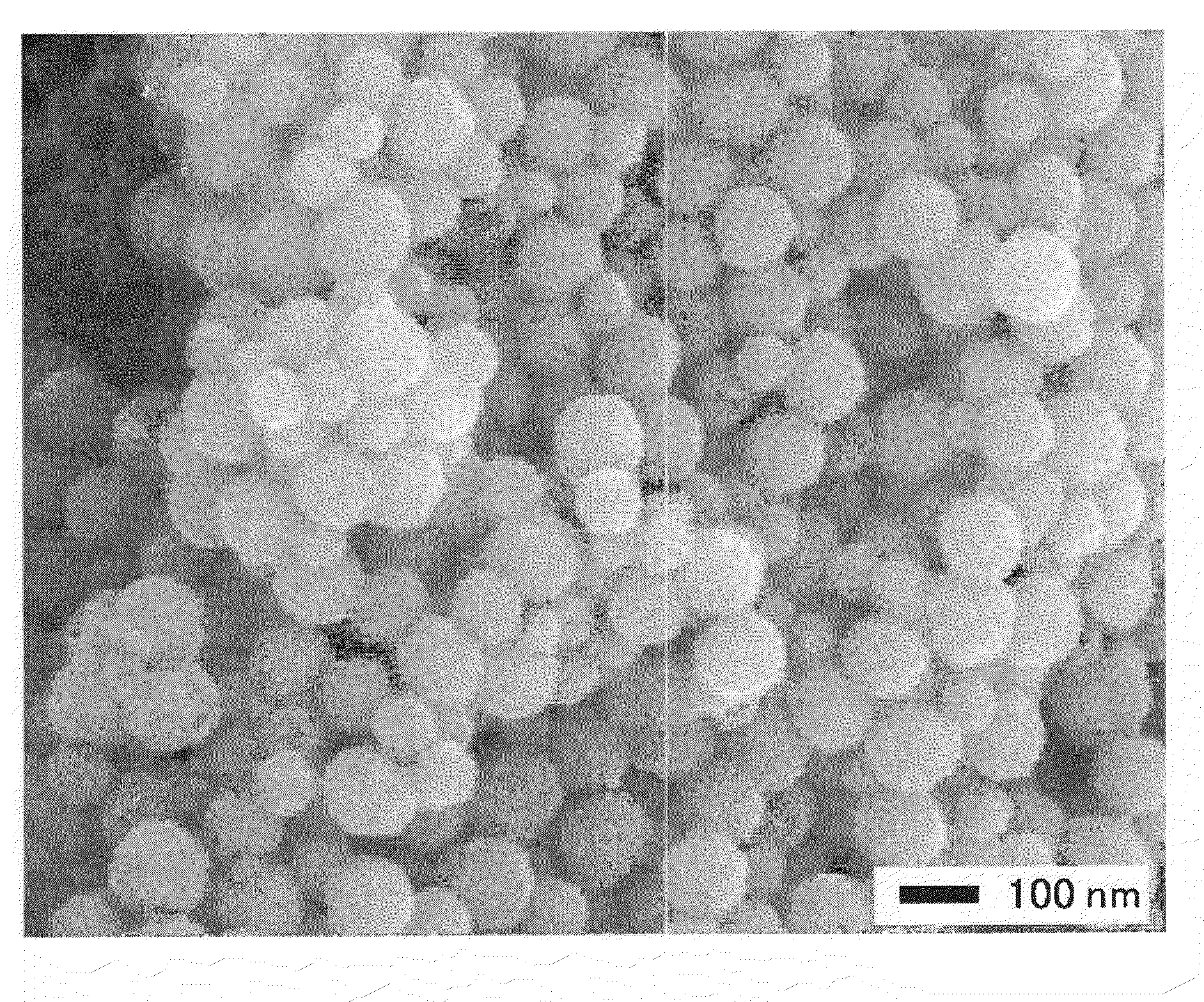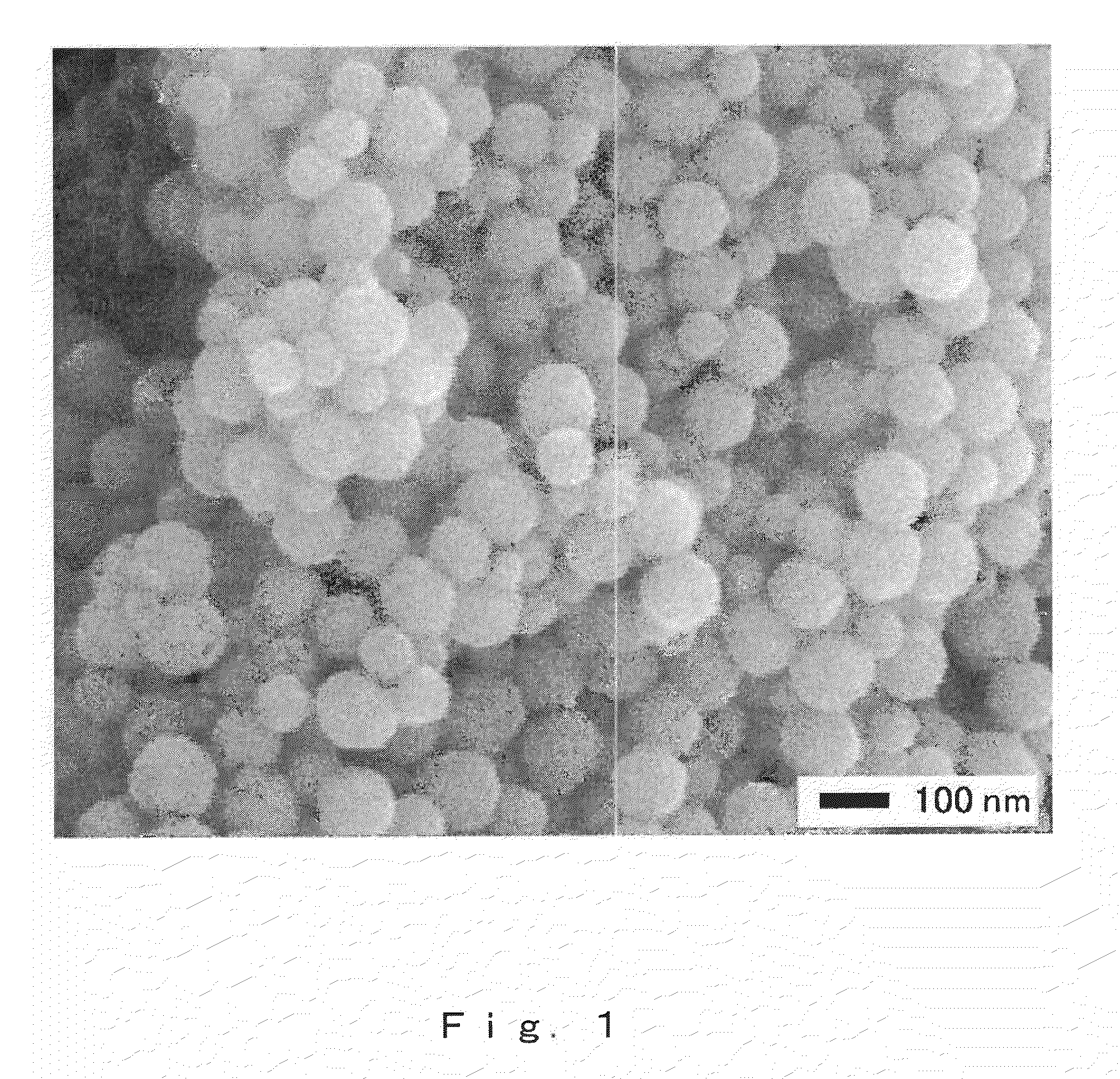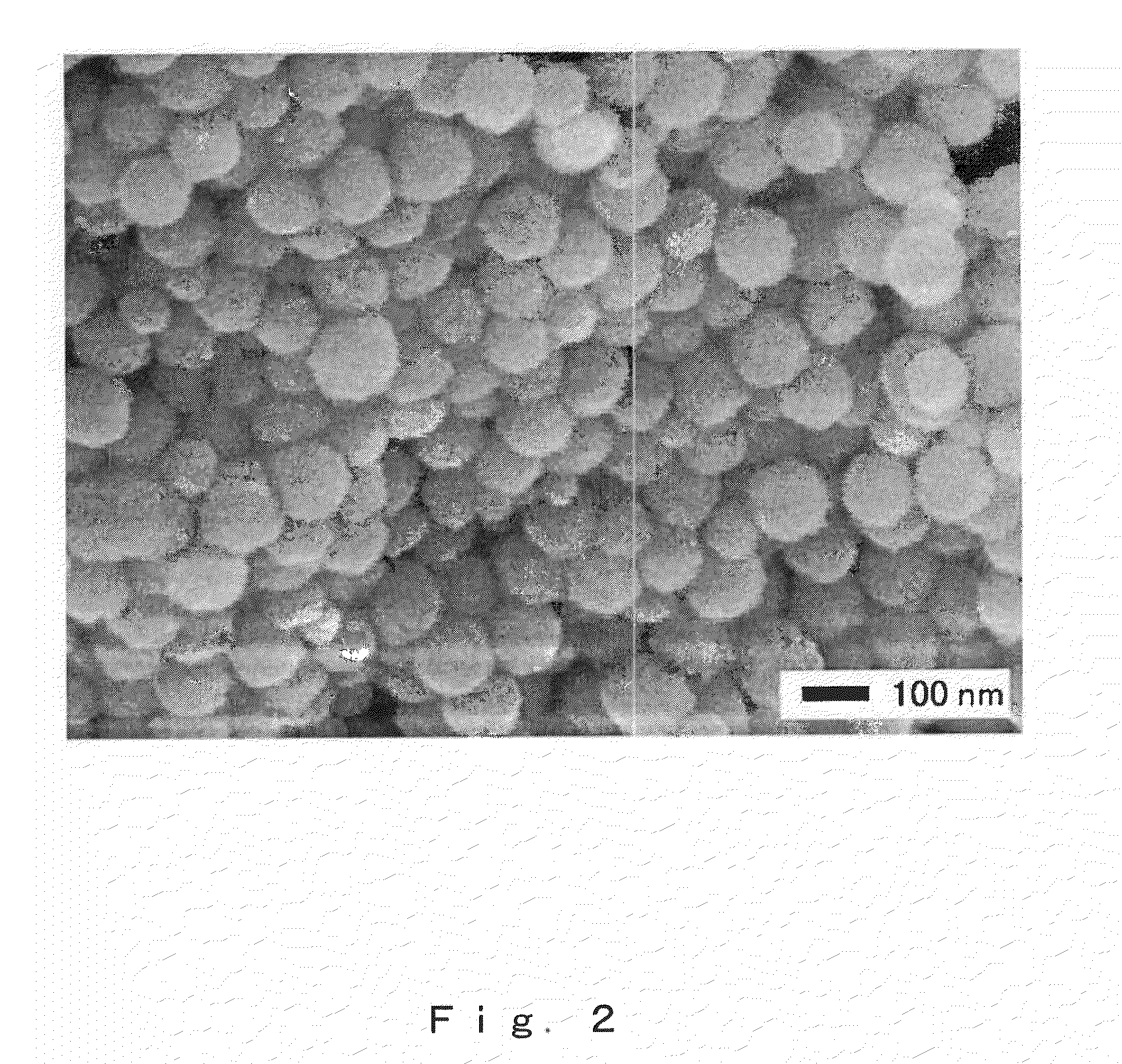Core-shell-type cerium oxide microparticle, dispersion solution comprising the microparticle, and process for production of the microparticle or dispersion solution
a cerium oxide and microparticle technology, applied in the field of coreshell-type cerium oxide microparticles, dispersion solutions comprising microparticles, and processes for producing microparticles or dispersion solutions, can solve the problems of admixture of impurities, difficult to obtain stable dispersion solutions, and general difficulty in aggregation
- Summary
- Abstract
- Description
- Claims
- Application Information
AI Technical Summary
Benefits of technology
Problems solved by technology
Method used
Image
Examples
example 1
[0095]Polyvinylpyrrolidone (PVP) and a cerium salt were added to 30 cm3 ethylene glycol (EG) (Wako Pure Chemical Industries, Ltd.) and stirred. The concentration of the added PVP was made 16 kg / m3 or 120 kg / m3. The PVP (Sigma-Aldrich) used had an average molecular weight of 10,000 for the catalogue value and 4,350 (as polyethylene glycol) for the analytical value yielded by gel permeation chromatography (GPC). The cerium salt was (NH4)2Ce(NO3)6 (Wako Pure Chemical Industries, Ltd.) or Ce(NO3)3.6H2O (Kojundo Chemical Laboratory Co., Ltd.) and was used at a concentration of 0.080, 0.400, or 0.600 kmol / m3.
[0096]The mixture was heated and then heated under reflux for the specified period of time at 190° C. The experimental conditions are shown in Table 1. A light brown gas was produced during heating under reflux, after which the solution assumed a white turbidity. Heating under reflux for the specified period of time yielded a mixed solution that exhibited white turbidity. A portion of...
example 2
[0099]PVP (Sigma-Aldrich, average molecular weight of 10,000 for the catalogue value and 4,350 (as polyethylene glycol) for the analytical value yielded by GPC) and Ce(NO3)3. 6H2O (Kojundo Chemical Laboratory Co., Ltd.) were added to 30 cm3 EG (Wako Pure Chemical Industries, Ltd.) and stirred. The concentration of the added PVP was set at from 16 kg / m3 to 160 kg / m3 (refer to Table 2). The Ce(NO3)3.6H2O concentration was set at 0.400 kmol / m3. The mixture was heated and then heating under reflux was carried out for 10 to 20 minutes at 190° C. However, in the case of sample 2-4, the reaction indicated below did not occur even when the heating / refluxing time was extended to 120 minutes.
[0100]Sample 2-1 was the same as sample 1-2 of Example 1. In the case of samples 2-1, 2-2, and 2-3, a light brown gas was produced during heating under reflux, after which the solution assumed a white turbidity. Heating under reflux for the prescribed period of time yielded a turbid white mixed solution (...
example 3
[0104]PVP having different average molecular weights was added to 30 cm3 EG (Wako Pure Chemical Industries, Ltd.) with stirring. The catalogue value and the analytical value (by GPC, as polyethylene glycol) for the average molecular weight of the PVP are shown in Table 3. The average molecular weight of the PVP by GPC analysis was increased in the sequence from A to F. The concentration of the added PVP was set at 120 kg / m3. The Ce(NO3)3.6H2O concentration was set at 0.600 kmol / m3. The mixture was heated and then heated under reflux for 10 to 30 minutes at 190° C.
[0105]For all the samples shown in Table 4, a light brown gas was produced during heating under reflux, after which the solution assumed a white turbidity. A turbid white mixed solution (the dispersion solution) was obtained after heating / refluxing for the prescribed period of time. Dilutions were also prepared by diluting the dispersion solution 10× with ethylene glycol (EG). A portion of the turbid white solution was then...
PUM
| Property | Measurement | Unit |
|---|---|---|
| particle diameter | aaaaa | aaaaa |
| particle diameter | aaaaa | aaaaa |
| temperature | aaaaa | aaaaa |
Abstract
Description
Claims
Application Information
 Login to View More
Login to View More - R&D
- Intellectual Property
- Life Sciences
- Materials
- Tech Scout
- Unparalleled Data Quality
- Higher Quality Content
- 60% Fewer Hallucinations
Browse by: Latest US Patents, China's latest patents, Technical Efficacy Thesaurus, Application Domain, Technology Topic, Popular Technical Reports.
© 2025 PatSnap. All rights reserved.Legal|Privacy policy|Modern Slavery Act Transparency Statement|Sitemap|About US| Contact US: help@patsnap.com



